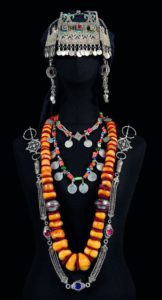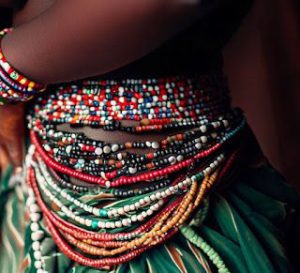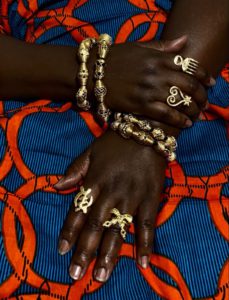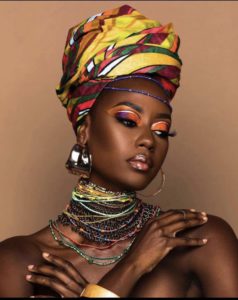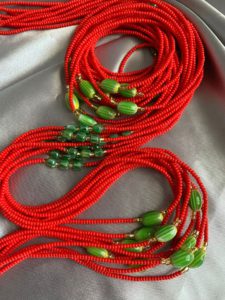The Profound Economic and Social Impact of Jewelry and Personal Beautification in Nigeria
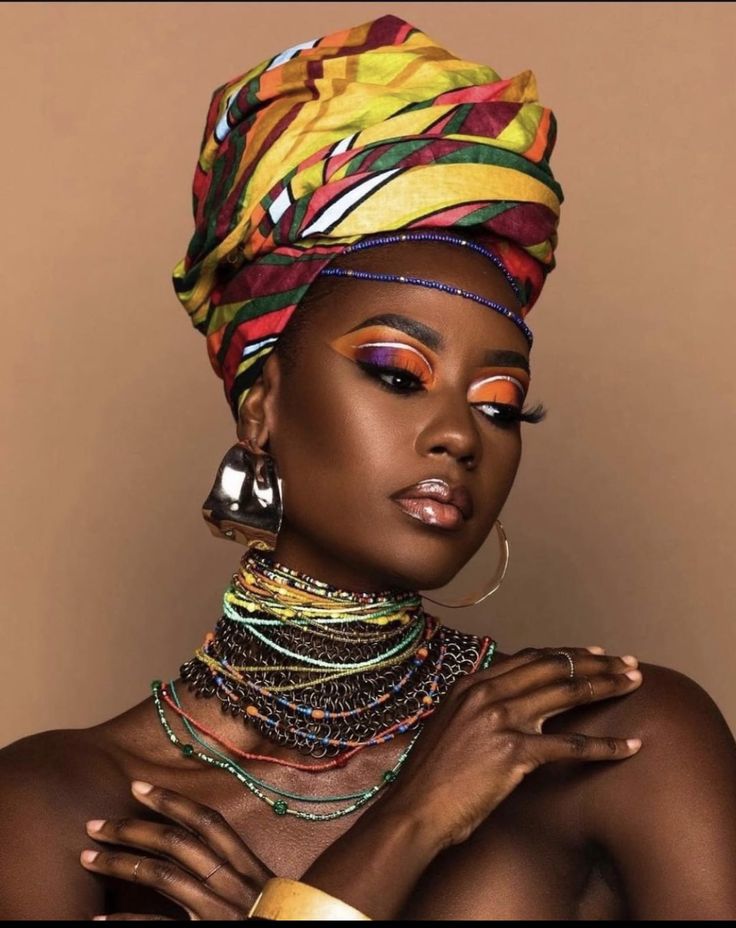
In Nigeria, the gleaming artistry of jewelry and the meticulous craft of personal adornment are far more than mere embellishments; they are deeply ingrained systems that drive economies, define social hierarchies, and encapsulate profound cultural narratives. From the bustling workshops of gold and silversmiths to the vibrant markets teeming with beads, and from the intricate patterns of hair braiding to the opulent displays at grand celebrations, adornment functions as a powerful, multifaceted form of capital—both financial and social. It sustains countless livelihoods, preserves invaluable traditional skills, fuels dynamic trade, and acts as a tangible investment, weaving itself inextricably into the daily rhythms and momentous occasions of the nation. Understanding this intricate web of impact is essential to truly grasp the central role of adornment in Nigeria’s past, present, and future.
Fueling Livelihoods and Driving Trade
The production, distribution, and consumption of jewelry and adornment materials represent a significant, often under-documented, economic sector in Nigeria, supporting a vast network of artisans, traders, and service providers.
Artisanal Specialization and Value Chains:
Metalworking Hubs: Regions like Bida in Niger State are renowned for their traditional brass and silversmiths, creating intricate jewelry, household items, and ceremonial objects. The craft here is generational, with families specializing in specific techniques like lost-wax casting, forging, and filigree. Similarly, parts of Kano and Ibadan have historical gold and silver working traditions, often supplying the elite and ceremonial markets.
Bead-Making and Stringing: While imported glass beads have dominated for centuries, local bead production (like the historical glass beads of Bida or the use of indigenous stones) and the specialized skill of bead stringing are crucial. Women, in particular, often form informal cooperatives for bead stringing, supplying market vendors and individual customers, generating direct income.
Hair Artistry: The beauty industry, particularly hair braiding and styling, is a colossal economic force. Local salons, street-side braiders, and mobile stylists provide employment for millions, predominantly women. The demand for extensions (human and synthetic hair), hair products, and intricate styles drives significant revenue, from material suppliers to the stylists themselves.
Textile and Adornment Link: The gele (headtie) industry is a prime example. The sourcing of diverse fabrics (Aso-Oke, lace, damask), the design and manufacturing of readymade geles, and the specialized skill of gele tying at events represent a complex and lucrative value chain.
Other Crafts: Carving (wood, ivory historically), leatherwork (for amulets or ornamental pouches), and calabash adornment also contribute to a diverse craft economy linked to personal beautification.
Trade and Commerce Networks:
Historical Trade Routes: Nigerian adornment has always been linked to trade. Gold from West African mines, highly prized glass beads (like Venetian Murano beads, known as “Akori” or “Segi” beads, or Bohemian beads), and rare materials like coral and amber flowed into Nigeria via trans-Saharan routes and later through European coastal trade, signifying wealth and facilitating wider economic exchange.
Vibrant Local Markets: Markets like Oshodi or Balogun in Lagos, Kasuwar Kurmi in Kano, or local craft markets in Abeokuta and Ile-Ife are bustling centers where artisans, wholesalers, and retailers connect directly with consumers. These markets are essential for the informal sector, providing accessible income and fostering local economic activity.
Bridging Formal and Informal: Many small businesses in the adornment sector operate informally, but their collective impact on job creation and wealth distribution is substantial, particularly for women and youth.
Tourism and Global Market Engagement:
Cultural Tourism: Adornment is a significant draw for cultural tourism in Nigeria. Visitors are often eager to acquire authentic traditional jewelry, learn about hair braiding techniques, or experience the artistry of gele tying, directly injecting revenue into local communities.
Export Potential: Contemporary Nigerian jewelry designers are increasingly tapping into global markets through e-commerce platforms (Etsy, www.ajokebrownmedia.com), international art and craft fairs, and collaborations with global fashion brands. The demand for unique, ethically sourced, and culturally rich products provides significant export potential, bringing foreign exchange into the country.
Identity, Status, and Community Cohesion
Beyond its economic value, adornment functions as a profound system of social communication, reinforcing identity, signifying status, marking transitions, and strengthening community bonds.
Identity and Belonging
Ethnic Markers: Specific hairstyles, patterns in beadwork, or methods of tying a gele can immediately identify a person’s ethnic group (Yoruba, Igbo, Hausa, Fulani, Edo, Ijaw, Tiv, etc.), sub-group, or even family lineage. This visual shorthand reinforces cultural identity and promotes a sense of belonging.
Gender and Role: Adornment often subtly or overtly communicates gender. For instance, specific waist beads or elaborate hairstyles are traditionally associated with femininity, while certain metal armbands or necklaces might be associated with male warriors or chiefs.
Status and Social Hierarchy
Wealth Display: The quantity, quality, and rarity of materials in jewelry (e.g., solid gold, expensive coral, ancient rare beads) are direct, visible indicators of wealth and prosperity. This display is particularly evident at social events where individuals may wear their most valuable pieces.
Royal and Chieftaincy Regalia: As explored in previous articles, the extensive, highly symbolic regalia of traditional rulers (Obas, Emirs, Ezes) are paramount in reinforcing their divine authority, political power, and high social standing. These pieces are not merely worn; they are an integral part of the institution of kingship.
Title-Taking: In many societies, particularly among the Igbo (with the Ozo title system), specific types of beads (e.g., coral beads) are essential components of regalia acquired upon taking a prestigious title, signifying achieved status and respect.
Social Validation: The act of “showing off” adornment at social events is often met with praise and admiration, acting as a form of social validation and reinforcing an individual’s position within their social network.
Rites of Passage and Celebration
Birth and Naming Ceremonies: Infants may be adorned with small beads for protection or to mark their entry into the community.
Initiation: Young people undergoing rites of passage into adulthood may wear specific jewelry or undergo unique body modifications (like historical scarification) to signify their transition and new responsibilities.
Marriage Ceremonies: Weddings are a grand display of adornment. Brides and grooms are meticulously adorned with elaborate jewelry, textiles, and hairstyles that signify their new status, the union of families, and the celebration of fertility and prosperity. The bride’s gele and intricate jewelry are central to her ceremonial look.
Funerals and Mourning: Even in mourning, specific forms of adornment or the absence of adornment can signify grief or spiritual states.
Festivals: Traditional festivals are major occasions for communities to showcase their rich cultural heritage through elaborate attire, including intricate jewelry, body paint, and hairstyles.
Cultural Preservation and Transmission
The continuous practice of adornment keeps ancient skills alive and ensures the transmission of cultural knowledge from one generation to the next.
Each piece of traditional jewelry or a specific hairstyle carries an archive of cultural memory, proverbs, and historical narratives. By maintaining these practices, communities actively preserve their heritage in a tangible and dynamic way.
Investment and Legacy
In Nigeria, jewelry often serves as a practical form of wealth accumulation and a significant family legacy.
Portable Wealth and Security:
Historically, and even today, precious metal jewelry (gold, silver) and valuable beads (coral, antique glass beads) served as a form of portable wealth. In times of economic instability, conflict, or migration, these items could be easily carried and converted into cash, offering a crucial form of financial security.
Investing in valuable adornment is a traditional way to store assets, particularly in societies where formal banking systems might be less accessible or trusted.
Heirlooms and Inheritance
Many valuable jewelry pieces are not just bought but inherited, passing down through families for generations. These heirlooms accrue immense sentimental, historical, and cultural value over time.
They connect individuals to their ancestors, embody family history, and serve as a tangible link to a collective past, reinforcing lineage and identity.
Market Value Appreciation
High-quality antique or culturally significant traditional jewelry can appreciate significantly in value, making them legitimate investment assets for collectors both within Nigeria and globally.
The growing global market for contemporary Nigerian art and design also extends to jewelry, with pieces by renowned designers fetching high prices.
Challenges and Opportunities in a Modernizing Context
While the impact is profound, the sector faces modern challenges and opportunities:
Challenges: Competition from cheap, mass-produced imports; ensuring fair prices for artisans; intellectual property protection for unique designs; access to formal financing and business training for informal artisans; the dwindling of certain traditional skills.
Opportunities: The rise of e-commerce and digital marketing allows Nigerian artisans to reach global markets directly; increasing demand for authentic, handcrafted, and ethically sourced products; growing diaspora and local interest in cultural identity through adornment; potential for government support through cultural initiatives and vocational training; development of unique, branded contemporary Nigerian jewelry that combines tradition with global appeal.
A Dynamic Tapestry of Life and Livelihoods
The jewelry and adornment practices in Nigeria are far more than superficial displays; they are deeply ingrained systems that fuel significant economic activity, sustain countless livelihoods, and act as a powerful form of social and cultural capital. From the daily commerce of artisans to the symbolic grandeur of royal regalia and the personal statements made at every celebration, adornment weaves a rich, intricate tapestry of life in Nigeria. It is a testament to resilience, ingenuity, and the enduring human desire to tell stories, establish identity, and celebrate existence through the profound beauty that adorns the body. This vibrant legacy ensures that Nigerian adornment remains a dynamic and invaluable part of the nation’s identity, continuously adapting, thriving, and shining on the global stage.

